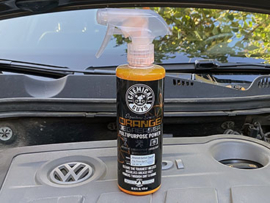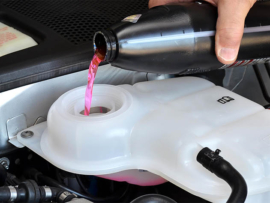- 1. P0014 Code – Camshaft position exhaust/right/rear, bank 1 -timing over -advanced/system performance
- 2. Causes of OBD-II Code P0014
- 3. Fixing of OBD-II Code P0014
- 4. Codes Related to P0014
- 5. Final words
- 6. FAQ
- 7. How easy to diagnose the code P0014?
- 8. Can I continue driving with the P0014 code?
- 9. How is the code P0014 serious?
P0014 Code – Camshaft position exhaust/right/rear, bank 1 -timing over -advanced/system performance
The code P0014 is related to the engine and indicates a problem with the camshaft position sensor. This sensor is responsible for communicating the position of the camshaft to the engine control module, which is crucial for proper engine operation. If the sensor is malfunctioning, it can cause a range of issues, including reduced fuel efficiency, decreased power, and engine misfires.
Additionally, the code may indicate that the camshaft timing is not within the expected range. This can lead to a range of problems, including increased engine wear and damage to the engine valves.
Causes of OBD-II Code P0014
This error occurs when there’s an issue with the timing of the camshaft and crankshaft, causing the sensors to malfunction. This can lead to the engine running roughly and a decrease in overall performance. There are a few potential causes of this issue:
- faulty camshaft position sensor
- damaged wiring
- issue with the timing chain or belt
Fixing of OBD-II Code P0014
Fixing the P0014 code typically involves a systematic diagnostic approach to identify and resolve the underlying issue. Here are some common steps taken to address the P0014 code:
- Inspection: A visual inspection of the camshaft position sensor, variable valve timing (VVT) solenoid, timing chain or belt, and associated wiring is performed to check for any visible damage, loose connections, or signs of wear.
- Electrical Testing: The electrical circuitry related to the camshaft position sensor and VVT solenoid is checked using a multimeter or specialized diagnostic tools to ensure proper voltage, continuity, and resistance. Faulty wiring or connectors are repaired or replaced as needed.
- Camshaft Position Sensor Replacement: If the camshaft position sensor is determined to be faulty or malfunctioning, it may need to be replaced. The new sensor is installed following the manufacturer’s specifications and recommendations.
- VVT Solenoid Replacement: Similarly, if the VVT solenoid is found to be defective, it should be replaced. The solenoid controls the oil flow to the VVT system, which affects the camshaft timing. A new solenoid is installed, and the oil passages are checked for any blockages or restrictions.
- Timing Chain/Belt Inspection: In some cases, a stretched or worn timing chain or belt can cause the P0014 code. If necessary, the timing chain or belt is inspected for proper tension, alignment, and any signs of wear. If it is found to be damaged or excessively worn, it should be replaced.
- Engine Control Module (ECM) Update: Occasionally, an outdated or faulty ECM software can contribute to the P0014 code. In such cases, updating or reprogramming the ECM with the latest software version provided by the manufacturer can resolve the issue.
It’s important to note that the specific repair process may vary depending on the make, model, and year of the vehicle.
Codes Related to P0014
There are some codes that likely would have been shown along with the aforementioned code: P0020, P0021, P0010, P0011, P0012, P0171, P0174.
Final words
It is worth mentioning that diagnosing and resolving the underlying cause of the P0014 code is essential to prevent potential engine damage and ensure the longevity of the vehicle. Consulting a qualified mechanic or technician is recommended to accurately diagnose and address the issue, ensuring the proper functioning of the engine and overall vehicle performance.
FAQ
How easy to diagnose the code P0014?
Here are some general steps that are typically followed during the diagnostic process for the P0014 code:
- Scan the Vehicle: A diagnostic scanner is used to retrieve the trouble codes stored in the vehicle’s onboard computer system. The P0014 code will indicate a problem with the camshaft position, specifically related to the exhaust side.
- Visual Inspection: A visual inspection is performed to check for any obvious signs of damage or wear. This includes inspecting the wiring, connectors, and components associated with the exhaust camshaft position sensor and the variable valve timing (VVT) system.
- Check Oil Levels and Quality: Inspect the engine oil levels and quality. Low oil levels or dirty oil can affect the performance of the VVT system. If necessary, top up the oil or change it as per the manufacturer’s recommendations.
- Test the Camshaft Position Sensor: Using a multimeter, the camshaft position sensor is tested to ensure it is functioning correctly. This involves checking the resistance and voltage readings according to the manufacturer’s specifications.
- Check the VVT System: The VVT system, including the VVT solenoid, oil control valve, and oil passages, is inspected for any blockages, leaks, or malfunctions. The solenoid’s electrical connections and wiring are also examined.
- Verify Timing Components: If the VVT system is functioning properly, the timing components, such as the timing belt or chain, are inspected for proper alignment and tension. Any signs of wear, damage, or misalignment may indicate a potential issue.
- Conduct a Road Test: A road test is performed to observe the vehicle’s performance and any abnormal engine behavior. This helps identify any specific driving conditions or engine load situations that trigger the P0014 code.
- Additional Diagnostic Tools: Advanced diagnostic tools, such as an oscilloscope or specialized scan tools, may be used to monitor and analyze the camshaft and crankshaft signals, as well as the VVT system’s operation.
Based on the results of these diagnostic steps, the exact cause of the P0014 code can be determined. It’s important to note that diagnosing the P0014 code accurately may require specialized knowledge, experience, and access to technical information specific to the vehicle make and model.
Can I continue driving with the P0014 code?
If the check engine light is on and you have a P0014 code stored, it is generally not recommended to continue driving for an extended period without addressing the issue.
How is the code P0014 serious?
While the severity of the code can vary depending on the specific circumstances, it indicates a problem with the camshaft position and the variable valve timing (VVT) system. Therefore, ignoring the issue could lead to more significant problems over time, including potential engine damage or failure.
We do an efforts to find, research and recommend the best products. So, we may receive commissions from purchases that you make after following the links in our product reviews.







